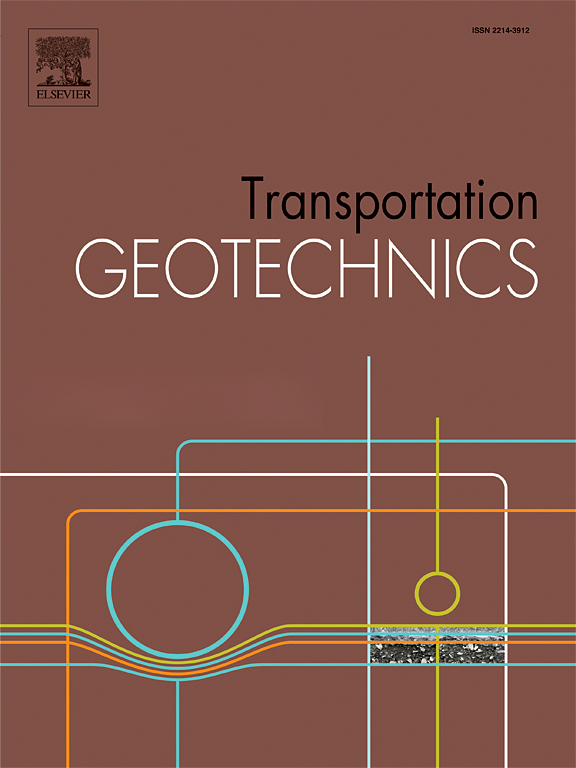Soil-aggregate-cement mixtures for base pavement layers: A strength and stiffness characterization
IF 4.9
2区 工程技术
Q1 ENGINEERING, CIVIL
引用次数: 0
Abstract
Pavements subjected to high volume load require a robust structure. In Brazil, cemented base layer is usually used instead of asphalt concrete thick layer due to cost issues. Soil-aggregate-cement (SAC) mixture is an alternative in pavement application, but the lack of design and dosage protocols hinders the understanding of the parameters influencing its mechanical behavior. This study presents a mechanical characterization of SAC mixtures in terms of strength (UCS and ITS) and stiffness (Mr), focusing on integrating the needs of pavement design to dosage purposes. For this, different SAC mixtures are produced, varying the soil-aggregate proportion (30:70 and 20:80) and cement content (3, 5 and 7 %). Mechanical properties were measured on cured mixtures at 0, 7 and 28 days and compared to structural responses of hypothetical pavements computed by mechanistic analysis. The results indicate a potential for using SAC mixtures in base layers due to their higher strength and stiffness. Predictive models relating ITS x UCS, Mr x UCS, and Mr x ITS with good statistical fit were proposed to assist researchers and engineers in selecting mixtures more adequate and durable for pavement applications, based on the concept of limiting the tensile stress acting on the cemented base course.
求助全文
约1分钟内获得全文
求助全文
来源期刊

Transportation Geotechnics
Social Sciences-Transportation
CiteScore
8.10
自引率
11.30%
发文量
194
审稿时长
51 days
期刊介绍:
Transportation Geotechnics is a journal dedicated to publishing high-quality, theoretical, and applied papers that cover all facets of geotechnics for transportation infrastructure such as roads, highways, railways, underground railways, airfields, and waterways. The journal places a special emphasis on case studies that present original work relevant to the sustainable construction of transportation infrastructure. The scope of topics it addresses includes the geotechnical properties of geomaterials for sustainable and rational design and construction, the behavior of compacted and stabilized geomaterials, the use of geosynthetics and reinforcement in constructed layers and interlayers, ground improvement and slope stability for transportation infrastructures, compaction technology and management, maintenance technology, the impact of climate, embankments for highways and high-speed trains, transition zones, dredging, underwater geotechnics for infrastructure purposes, and the modeling of multi-layered structures and supporting ground under dynamic and repeated loads.
 求助内容:
求助内容: 应助结果提醒方式:
应助结果提醒方式:


